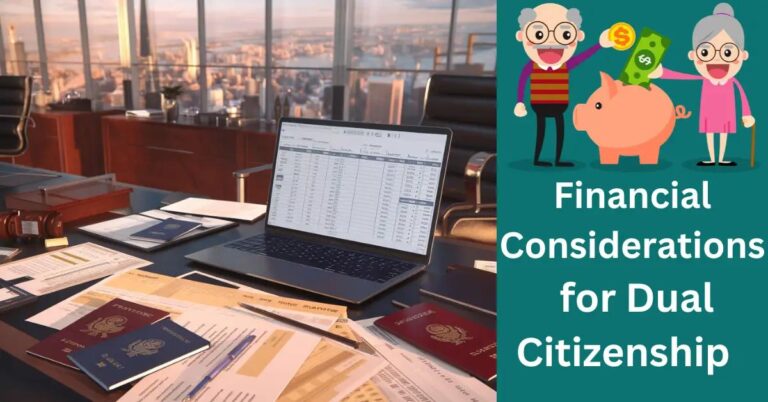TL;DR:
- You can transfer retirement savings abroad by understanding account types and international transfer processes.
- Check account restrictions, notify your institution, and use SWIFT codes for bank transfers.
- Open a foreign bank account with proper ID and residence proof.
- Consider online banks like Wise for competitive rates.
- Evaluate transfer fees; hidden costs may occur.
- Tax implications vary by country; explore tax treaties to avoid double taxation.
- Compliance with financial and tax rules is crucial; consult experts for guidance.
- Roth IRA and other US accounts can be managed abroad, but verify tax rules.
- Diversify investments to manage exchange rate risks.
- Utilize expat tools and advice for smoother transitions.
- Keep abreast of legal considerations and network with other expats for insights.
Planning to enjoy your golden years overseas? If so, understanding how to transfer retirement savings to another country is vital. It can feel like a labyrinth of rules and numbers, but fear not! I’ll guide you through the process every step of the way. From international bank transfers to tax rules, I’ve got you covered. Let’s make your transition to expat life seamless and secure, one step at a time.
How can you effectively transfer retirement savings abroad?
Can you transfer retirement funds to another country? Yes, you can. You need to understand the process of transferring retirement savings. It begins with knowing your retirement fund account type. Different accounts have unique rules for international transfers.
How to transfer retirement savings abroad from USA? First, check the terms of your account. Some accounts may have penalties or restrictions. Notify your financial institution about your plan to transfer funds. They will provide details on any forms or approvals needed.
Next, understanding international bank transfers and their uses is key. These transfers move your money from a U.S. account to a foreign one. Banks employ SWIFT codes to ensure your money goes to the correct place. Confirm that your bank uses secure transfer systems.
Setting up a foreign bank account is necessary for holding and accessing your funds abroad. Visit a bank and open an account with your ID, proof of residence, and purpose for the account. Choose a bank that caters to foreigners or offers services in English.
When selecting secure international money transfer options, look at fees, currency exchange rates, and processing times. Some people use international online banks or platforms like Wise or PayPal. These options can offer better rates and lower fees.
Evaluating transfer fees is crucial. Fees differ based on transfer amount, location, and provider. International transfers may have hidden costs. Ask your financial provider for a detailed fee breakdown before you start the transfer.
Ensure you follow these steps to avoid errors and hidden charges. Consult a financial advisor with experience in international funds transfer if problems arise. Keep all documents related to your retirement savings transfer process safe. Ensure that you have digital copies for easy access. Being thorough now will help you enjoy your retirement.
What are the Tax Implications and Legal Considerations of Transferring Retirement Savings?
When moving abroad, the biggest worry is taxes on your retirement savings. What happens to my retirement accounts if I move abroad? You do not lose them, but handling them gets tricky. First, know that each country has its own tax rules. These rules affect how your retirement funds are treated.
Do you lose your retirement if you move to another country? No, but there are tax implications based on your new home country. Check if your new country has a tax treaty with your old one. These treaties help avoid paying taxes twice on the same money. This is called double taxation.
Understanding compliance rules is crucial for transferring your savings internationally. These rules include reporting your account and ensuring the transfer follows the law. Non-compliance can lead to fines. It’s vital to keep your financial paperwork current and accurate for your peace of mind and financial health.
Navigating the maze of expat tax planning strategies is key. Adjusting your strategy can save you money. Before you move, speak with a tax advisor who understands both local and foreign tax codes. This ensures that your assets are protected and managed wisely.
Consider the legal aspects of moving your retirement savings. Some retirement accounts have laws limiting transfers to overseas accounts. Check with your financial institution to understand which accounts can move abroad.
It’s important to be aware of any legal considerations when transferring your savings. You may need to establish residency in your new country or even open a local bank account. Always follow the rules to avoid penalties or permanent loss of assets.
In sum, moving your retirement abroad is not about losing your money. It’s about planning ahead to protect and grow it in new surroundings. The key is understanding tax rules and compliance, and using sound expat tax planning. With this knowledge, you can confidently take your retirement savings wherever life leads you.
How to Transfer Retirement Savings Abroad Easily?
One big question retirees face: what to do with US savings like Roth IRA when moving? First, you can keep US accounts open, yet manage them abroad. This way, you maintain your benefits but may face exchange rate concerns. You may wonder, is Roth IRA not a good route if you want to retire abroad? The answer: Roth IRA can be helpful, but tax rules vary by country. It’s crucial to verify tax laws in your new country, as some might tax Roth IRA withdrawals more than others.
For managing retirement portfolios with overseas accounts, double-check the international agreements between the US and your new country. Some nations have tax treaties that ease the tax burden on retirees. This keeps your funds safe, avoiding double taxation. Another important step is using strategies to secure retirement income abroad. Diversify your investments both in US and foreign markets. This approach limits the risk of currency shifts.
Next, protecting foreign retirement funds through trusted financial institutions is vital. Only work with banks and brokers that have a strong reputation and global reach. This ensures your money is in capable hands and reduces the risk of fraud or mismanagement. Also, look for financial safety tips for retirees abroad. Always keep emergency funds accessible and consider health insurance that covers international care. This financial cushion can help cover unexpected costs.
Now, some insights on Roth IRA and other US accounts for expatriates. You might decide to convert a traditional IRA to a Roth IRA, considering the tax implications. This involves paying taxes now, but it may result in tax-free withdrawals later. Ensure you consult with an expert before making such decisions.
Finally, make sure to research and plan carefully before shifting your retirement savings overseas. Seek guidance from financial advisors experienced in international transfers. Taking each step with careful thought can secure your hard-earned savings for a lifetime of travel and new adventures.
How to Transfer Retirement Savings Abroad Easily?
Can you retire and move to another country? Yes, you can retire abroad, but it requires planning. Moving your retirement funds involves several steps. You might need expat financial planning tools for strategic retirement payments. These tools help you manage currencies and rules across borders.
Understanding international pension planning advice is also key. It helps you know which pensions you can use in your new home. You must consider the currency exchange rates and tax laws.
Finding a financial advisor specializing in international transfers can make this process smoother. They can show you how to set up accounts and transfer funds safely. With their help, you can avoid unnecessary fees and follow the right rules.
How does retirement work if I plan to move abroad and lose citizenship? Your citizenship change won’t take your retirement away. But, you might have tax changes. An expat legal counsel for retirement transfers offers advice on these issues. They provide insights on keeping assets safe and comply with both countries’ laws.
When planning for retirement, think about networking. Networking with other expat retirees can provide shared insights and advice. They might share experiences that help you avoid mistakes. Joining forums and expat groups can be valuable.
Saving for a retirement fund if moving countries a lot? Use flexible savings accounts ideal for travelers. These accounts allow moving funds without penalties. Having various savings options ensures your money grows despite frequent moves.
Switching countries can change your financial strategies. Thus, having the tools, advisors, and networks makes the transition successful. Always stay informed of any changes in rules and seek advice before acting.
To sum it up, retiring abroad isn’t difficult. Use the right tools and seek trusted advice. Stay proactive to enjoy your retirement without financial stress. For more on this, check out resources like this expat financial guide.
Conclusion
We’ve tackled the complex world of transferring retirement savings abroad. From understanding the transfer process to exploring tax implications and legal matters, planning is key. Secure your funds by choosing reliable transfer methods and staying informed on compliance rules. Don’t forget tax strategies and protection for your savings overseas. With the right tools and expert advice, your retirement abroad can be smooth and secure. Make informed choices, and your financial peace of mind will follow you wherever you go.







